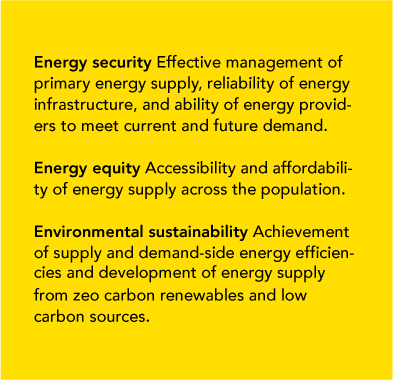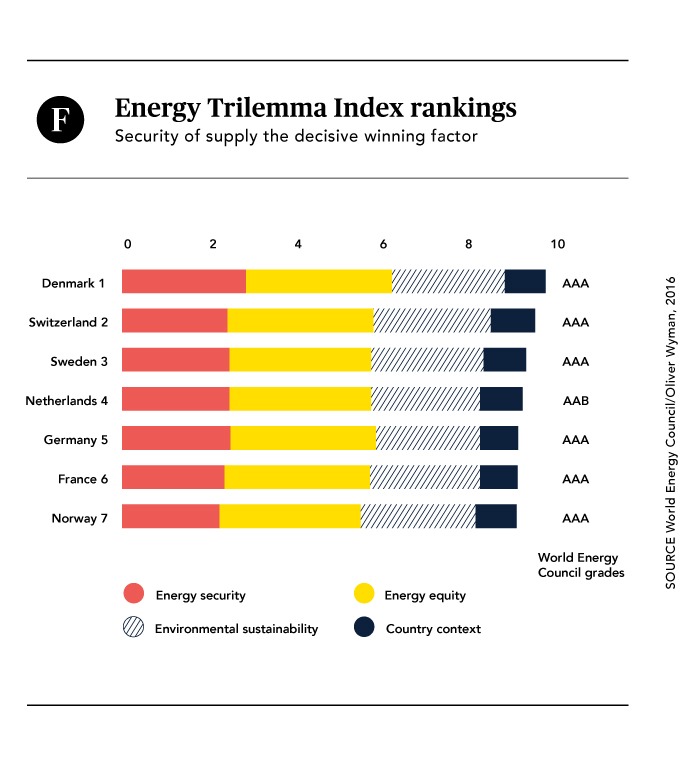APPLE, GOOGLE AND FACEBOOK
The vast stacks of computer servers that store and transmit the world’s digital information are enormous users of electricity and producers of heat. Countries with cool climates, extensive broadband capacity and green power systems are favoured locations for these beating hearts of the digital age
This year Google became the third digital-age global tech company, after Apple and Facebook, to announce it had selected Denmark as the location for a north European data server centre. The Apple project, three times the size of that proposed by Facebook and covering an area the size of 23 football pitches, is already under construction and could be ready for use before the year is out.
What appears to be a data centre fairy tale in the making for Denmark is being driven by the rapid global expansion of traffic in digital information. In the five years between 2010 and 2015 the number of chip-driven appliances grew from three billion to 15 billion, with 50 billion devices expected by 2020.
As giant guzzlers of electricity, the world’s IT mastodons have energy on their minds and Denmark’s status as a wind power pioneer has helped it penetrate their common sub-conscious, explains Kim Schultz at the Danish foreign ministry’s Invest in Denmark unit. The main attraction of Denmark for data centres is the near guarantee it offers of uninterrupted electricity and with that, smooth flows of digital traffic. Electricity is available in Denmark 99.997% of the time, the highest security of supply in Europe.
The Danish power system, connected to that of Norway and Sweden to the north and east and Germany to the south, has plenty of built-in redundancy, with the option of tapping into neighbouring grids for reserve power, if necessary.
Denmark also has a well-developed broadband infrastructure, with fibre-optic links to central Europe and an undersea link via Britain to the United States. A third attraction Denmark offers is the cool year-round ambient temperature, which can provide vast banks of servers with plenty of air and water cooling. In the hottest month of the year, average day temperatures in Denmark rarely exceed 20°C, the operating temperature for data servers; the year-round average temperature is 7.7°C.
SERVERS HEAT HOUSES
Denmark provides good connectivity, with shorter routes for data to travel between locations compared with the other Scandinavian countries, Sweden, Norway and Finland. This “lower latency” works in Denmark’s favour, says Philip Low from BroadGroup, an IT consultancy that has produced a report on data centres in Nordic countries. The slightly warmer Danish climate compared with the other countries is not the disadvantage it once was, thanks to better server cooling technology.
A further advantage is the country’s energy system, which allows waste heat from data centres, whether as hot water or hot air, to be used to heat buildings, including residential property. “Data centres can provide a fantastic contribution to district heating without the use of fossil fuel,” says Kim Behnke from the Danish District Heating Association. Along with Sweden, Finland and the Baltic countries, Denmark is among the only countries where two-thirds of residential property relies on district heating to keep warm. Waste heat from Apple’s data centre will provide district heating to the nearest town, Viborg, and its nearly 100,000 citizens.
EXPLOSIVE ONLINE GROWTH
The Apple servers are expected to use as much electricity each year as half a million Danish homes. The national power system operator, Energinet.dk, estimates that the three data centres being located in the country by Facebook, Google and Apple will increase the country’s power consumption by 11% by 2022.
At Leeds university in northern England, data centre expert Ian Bitterlin expects the combined energy consumption of the world’s data centres will double every fourth year, despite technology improvements and more efficient operation. The near exponential growth is largely driven by the increasing numbers of private consumers gaining internet access and the band width needed for streaming moving pictures, says Bitterlin. “And what happens when the sixty per cent of the world not connected to the internet comes online?”
GREEN PROFILE
The growth scenario is a familiar one for the world’s major IT companies and most of them have a green energy strategy in place. “They are aware that using energy more efficiently won’t be enough in itself and they have their eyes on where energy comes from,” says Gary Cook of Greenpeace USA and main author of Clicking Green, an annual report that examines IT energy consumption.
Both Apple and Facebook promise that their Danish data centres will use only renewable energy. Around 20 further IT companies have committed to the same goal, primarily in Europe and North America, with Asia some way behind. “They themselves are worried about climate change and their consumers demand it, both business customers with climate goals and young environmentally conscious customers,” says Cook about the motives of the major IT technology companies.
The Nordic countries are expected to maintain their status as low-cost electricity areas as well as increase the proportion of green energy. By 2020 about 80% of electricity demand in Denmark will be sourced from renewable energy. •
TEXT Regner Hansen


